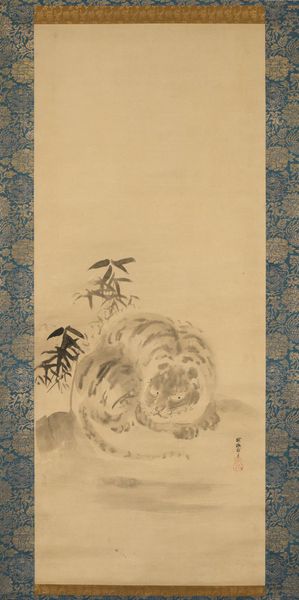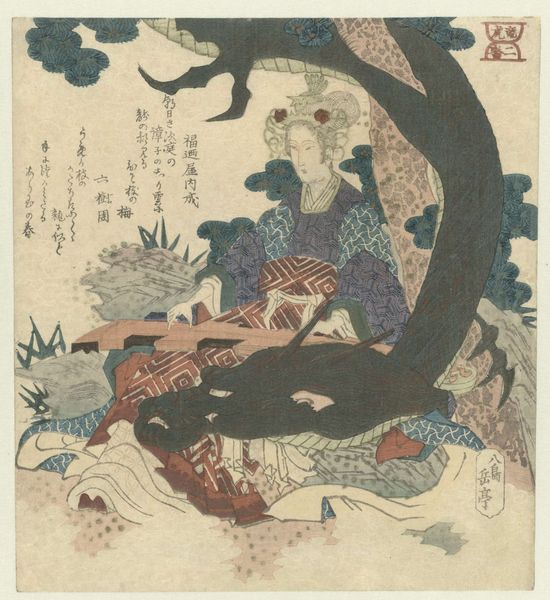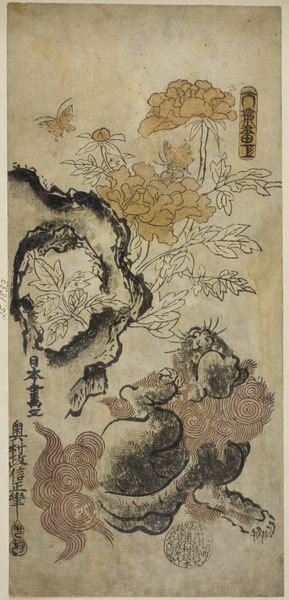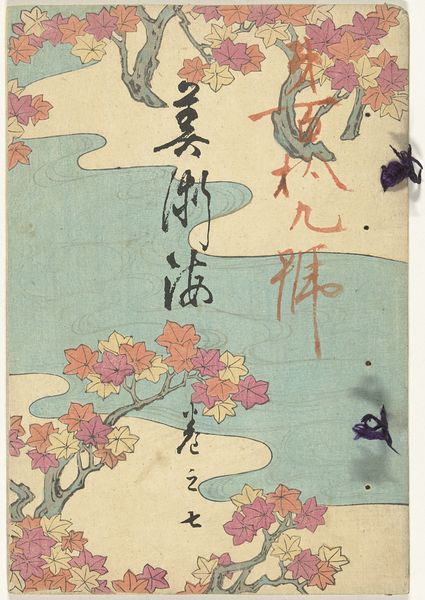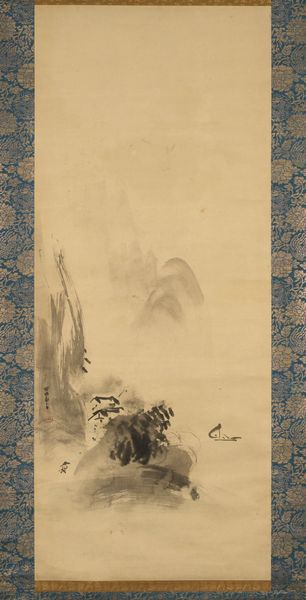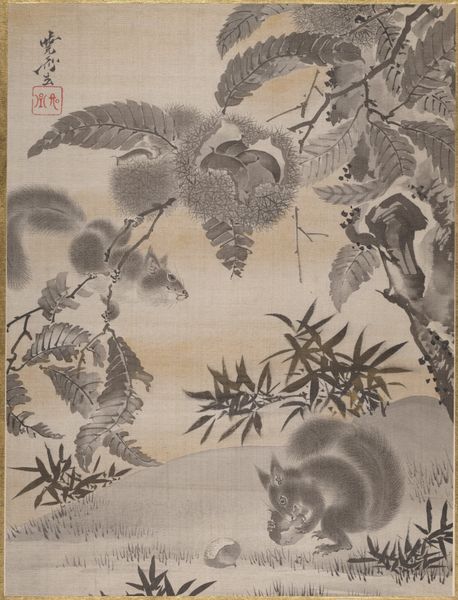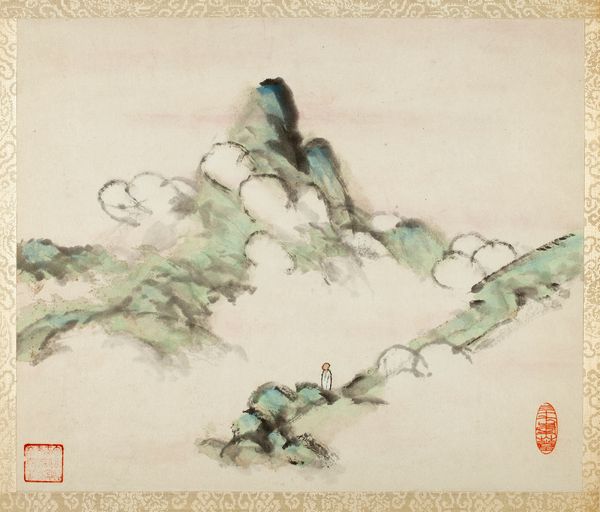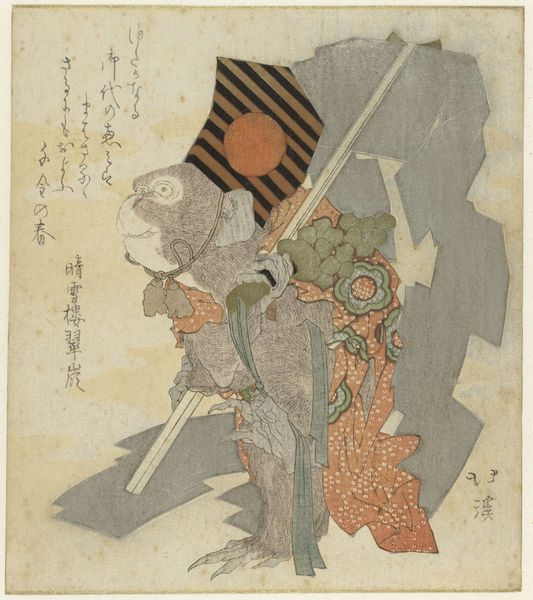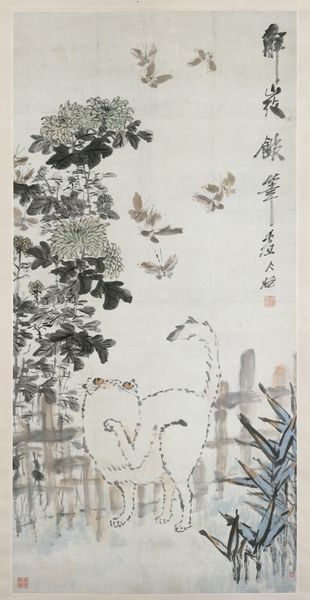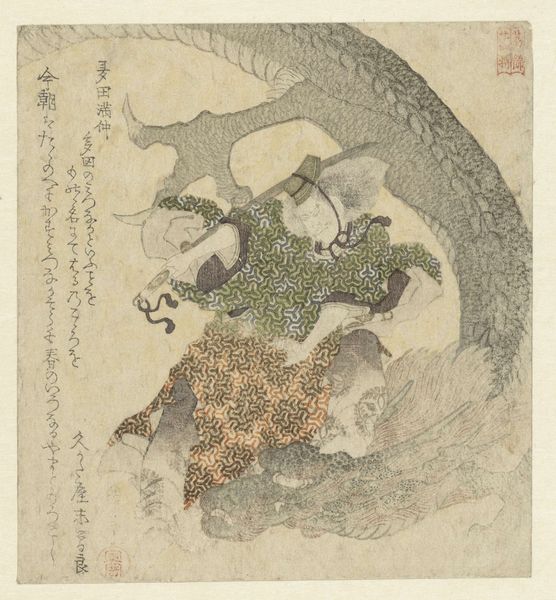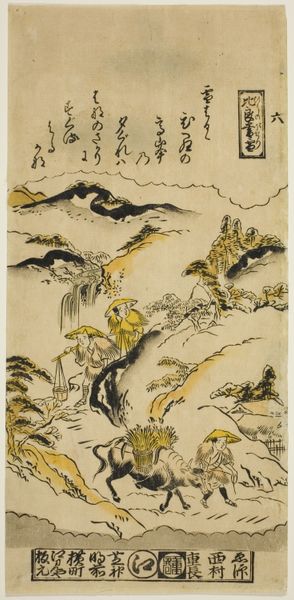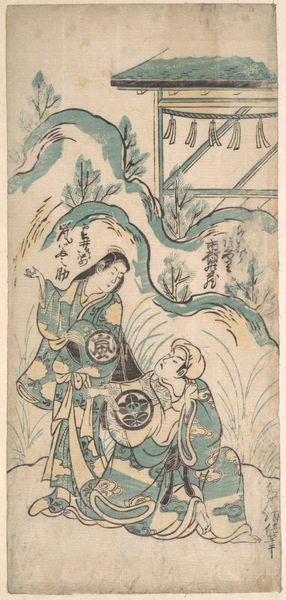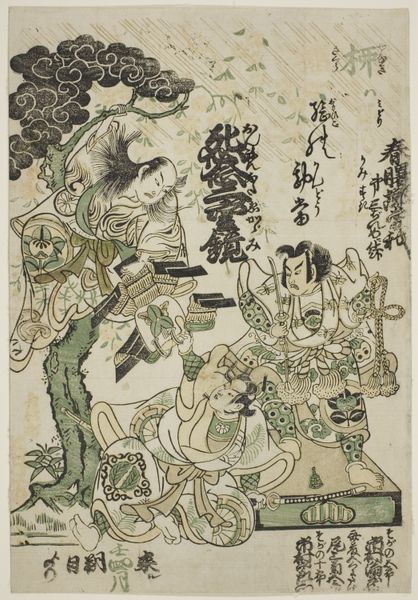
painting, watercolor
#
painting
#
asian-art
#
watercolor
Dimensions: Image: 61 1/2 × 31 3/8 in. (156.2 × 79.7 cm) Overall: 8 ft. 9 in. × 37 3/8 in. (266.7 × 94.9 cm) Overall with knobs: 8 ft. 9 in. × 39 5/8 in. × 1 1/4 in. (knob diameter) (266.7 × 100.6 × 3.2 cm)
Copyright: Public Domain
Lü Ji painted "Peacocks, Pine Tree, and Peonies" using ink and color on silk, some time in the late fifteenth century. Court painters in Ming Dynasty China were expected to create auspicious images, laden with symbolism. Here, the peacocks and peonies are emblems of wealth and beauty. The formal naturalism of the painting signals the artist’s deep familiarity with the natural world, but also with the canon of bird-and-flower painting that had developed since the tenth century. It is likely that Lü Ji studied at the Painting Academy, an institution patronized by the court, in which artists were trained to create paintings that served to glorify the Emperor and his realm. Yet, the flamboyant, decorative style evident here was soon criticized by the literati class, who favored a more individualistic, expressive approach to painting. Historical sources such as court records, artists' biographies, and treatises on painting, help us to understand the cultural and institutional context in which "Peacocks, Pine Tree, and Peonies" was created. The meaning of art is contingent on the society in which it was produced.
Comments
No comments
Be the first to comment and join the conversation on the ultimate creative platform.
